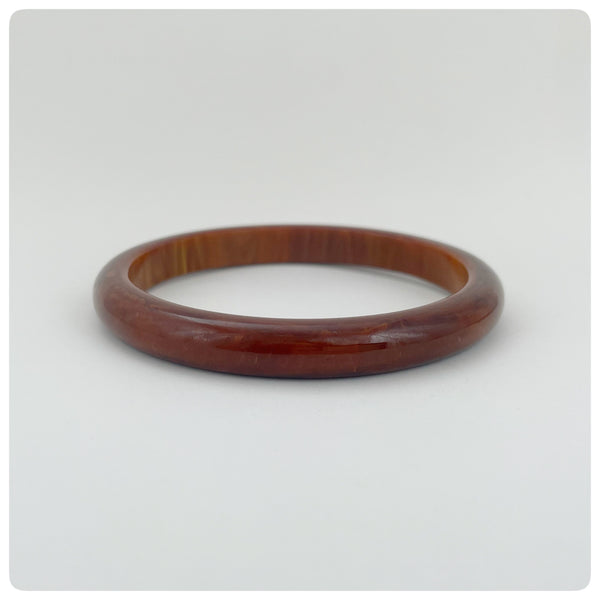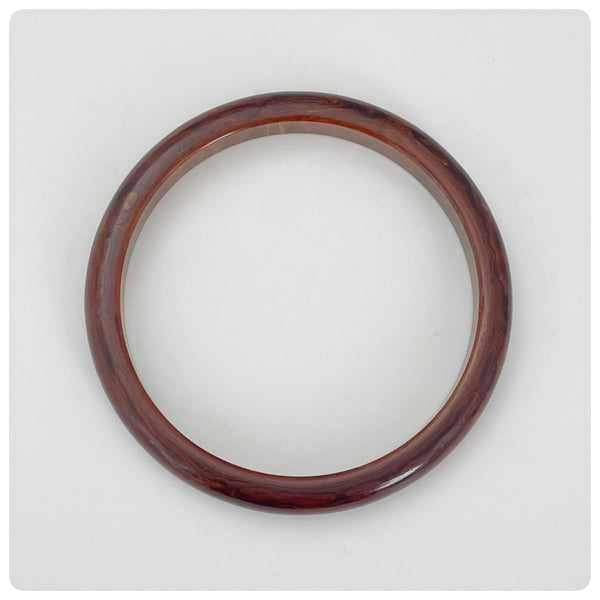Rootbeer Bakelite Bangle Bracelet, Early 20th Century
In 1909, a Belgian chemist named Leo Baekeland created the first entirely synthetic plastic. Baekeland called his plastic “Bakelite”, and it revolutionized consumer goods. Lightweight, durable, heat resistant, and nonconductive, this material was particularly well suited in the emerging automotive and electrical industries. Its use quickly expanded as manufacturers realized its vast potential. Bakelite’s affordability and sleek, modern aesthetic and seduced consumers, who demanded items such as vanity and desk sets, telephones, lamps, clocks, radios, kitchenware, tableware, and game pieces.
Bakelite jewelry's popularity exploded in the Roaring Twenties, as it served as an appealing replacement for other materials. It came in a variety of colors, and could be easily carved into intricate shapes. This eventually led to the introduction of other synthetic materials, like nylon, polyester, and spandex, to the fashion industry.
This example is in excellent condition.
2 1/2" inside diameter, 3/8" width.



